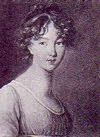
I am a process knitter. That is, I like to knit but I am equally interested in the construction of the garment/object, the diversity of stitches and techniques and materials. I knit to knit, rather than always to wear or use. Sometimes, however, this interest in a project only lasts as long as the novelty of any or all of the above. Hence I currently have more than sixty knitting projects in various states of progress or wips (works in progress.) From lace pincushions to handbags to cardigans to the full body Garment. As this has been a lifelong habit, I can assume that as long as I have breath and ability, the projects, as in the past, will all be eventually completed at some point.
Roughly half of my output is contemporary knitting, clothing and accessories for myself, friends and family, and charity knitting. The other half is historic knitting which is definitely a process exercise in many cases. Some of the knitting is from historic patterns but the word pattern is rather loosely used. These may vary from a suggestion of a stitch pattern (a few sentences of text without illustrations, needle size, type of yarn) to an illustrated (drawing or photograph) pattern with needle sizes and, sometimes, the kind of needle (steel, rosewood, bone, etc.) and the kind of yarn, quantity and colour. Other knitting is transcribed from extant historic garments or photographs in books or on the web from institutional collections. This means choosing similar materials from modern sources, and working out gauge/tension, needle size and actual size of the finished garment or object. Colour images are a blessing as black and white ones can be a tease. Scraps of information from diaries, letters, journals, merchant and runaway servant and slave advertisements are invaluable. Paintings and other artworks are less reliable as researchers are at the mercy of artistic whim or ignorance of the art and tools of knitting. By pulling all of the above together, I try not only to recreate a garment or object from the past but also sample the same experience of creation. The phrase "The past is a foreign country" is frequently heard in historic reenactment or interpretive circles. No one can truly understand what life was like for anyone, even the people of a generation ago, let alone a century or more, no matter how much we study or demonstrate in historic clothing. We can, however, at least get a glimpse into the past, as if passing by quickly, by recreating something in the same way, to the best of our knowledge, as it was done in another time.


2 comments:
I was rather shocked to see the term "wip" here, because I've never heard it used outside the electronics manufacturing company at which I worked back in the nineties. Is this a common knitting term? I am with child to know how far back it goes.
I have heard the term in all kinds of needleworking circles over the past twenty years or so. It may go back even further than that but has probably been used more since the arrival of the Internet and its legion of acronyms.
Post a Comment